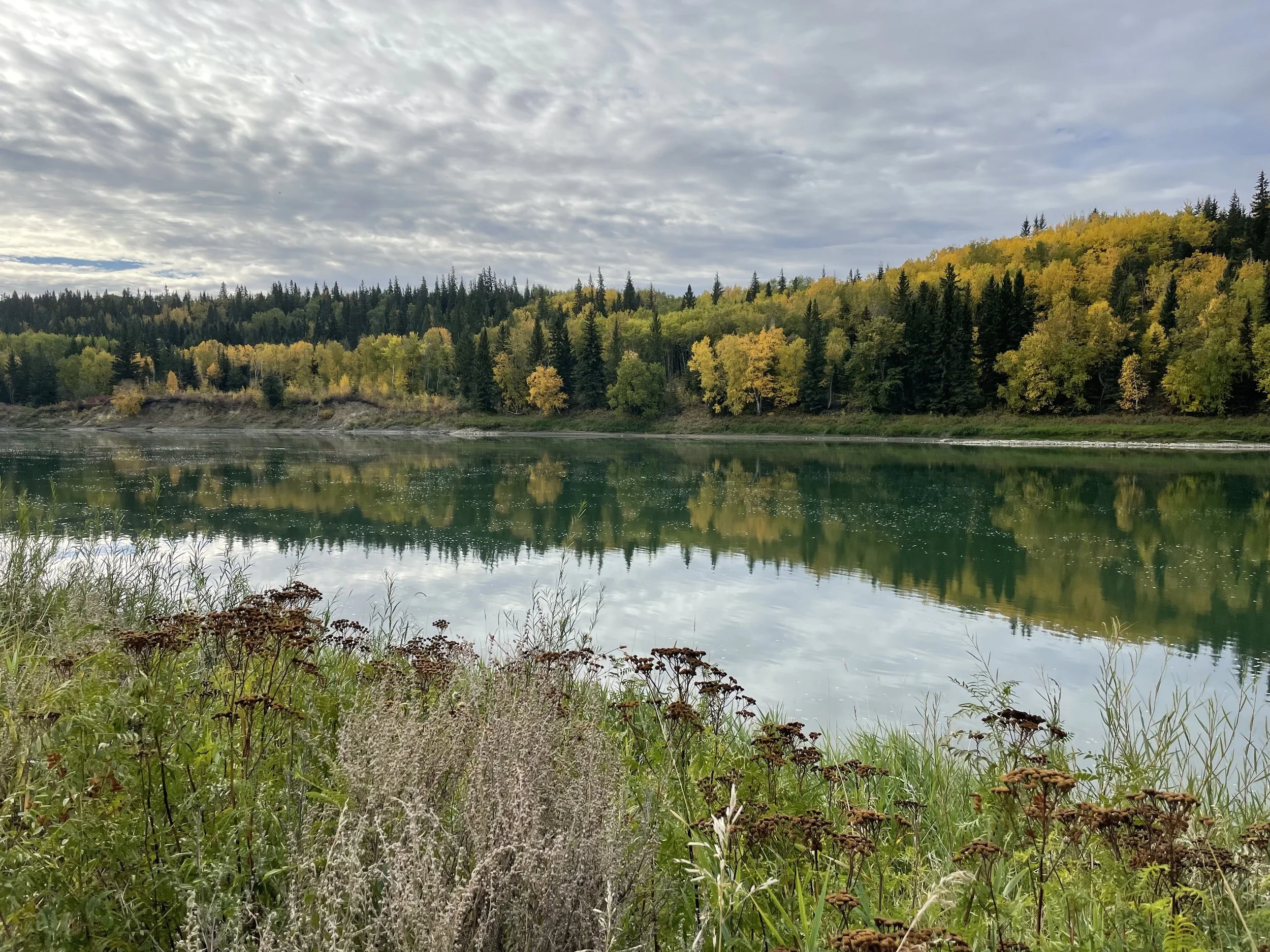River Valley Round-Up: National Urban Park & North Saskatchewan River Heritage Designation
One of the defining features of the Edmonton landscape is undoubtedly the River Valley. Whether it’s riding through the trail system, biking through the ravines, walking on the paths, or paddling down the river, I am always humbled by our access to tremendous nature all while being in a city of 1 million, which can sometimes feel so far away. That’s how I got involved with the North Saskatchewan River Valley Conservation Society which advocated for the protection, conservation, and well-being of Edmonton’s “Ribbon of Green.”
At the same time, we are losing River Valley land (6.4% net loss over the last few years) and eroding our trail system. During the last 4-year budget debate, we heard from so many Edmontonians about the importance of environmental protection and conservation for the River Valley. Yet, key budget motions related to the River Valley were either not tabled or not passed because of fiscal constraints.
This is why I think a few decisions that have been discussed at City Council recently will be particularly important for us to continue to steward this important natural feature, with the potential for more resourcing to be unlocked.
The National Urban Park Initiative - August 22, 2023 City Council Meeting
City Council voted to move the National Urban Park initiative from the pre-feasibility stage to the planning stage during the August 22nd meeting. What this means is that the City is exploring if designating the River Valley as a National Urban Park would be beneficial and what this might look like. No final decisions have been made, and the City can withdraw from the exploration of this project at any time, including in the planning phase.
Importantly and very contrary to a common misperception that is circulating, moving forward into the next stages of planning does NOT mean giving ownership of our River Valley lands to the federal government - this is NOT a scenario that I or my colleagues would support, and we confirmed this understanding several times during Urban Planning committee debate on this same topic. Instead, I believe this initiative is a prime opportunity for innovative governance models such as a municipal-federal-Indigenous tripartite approach, that can unlock Edmonton’s access to additional funding that can:
Increase accessibility for Edmontonians of all walks of life to the ribbon of green, create more recreation and learning opportunities, and increase tourism exposure,
Amplify our conservation program, to improve the unique natural resource, and protect biodiversity, and
Provide support for Indigenous reconciliation and co-stewardship of the land.
One key principle in this initiative is that the River Valley would remain free to use and access for all (noting that for circumstances like renting a facility, there would be a charge, which is also our current practice as a City).
I believe this decision to move into the planning phase balances what we are constantly hearing from Edmontonians about the need to maintain local governance and influence over the River Valley, explore alternative funding streams to deliver the outcomes we want to see when it comes to our ribbon of green, and preserve it for future generations. There will be more to come of course, with questions like funding and governance that still need to be answered, but this was an important milestone.
North Saskatchewan River Heritage Designation - August 29, 2023 Urban Planning Committee
The Urban Planning Committee unanimously supported the decision for Edmonton to join the effort led by Smoky Lake County to designate the North Saskatchewan River as a Heritage River under the Canadian Heritage River System, which with 41 designated rivers nationwide offers a model of stewardship, cooperation, and participation. This effort aligns well with many River Valley-related initiatives such as the proposed National Urban Park, River Valley Modernization, River Valley Alliance, and River Crossing.
I found the initiative to be an excellent example of an urban-rural partnership with 15 municipalities. The collective effort would see the river be nationally recognized for its heritage and cultural values, strengthen the river’s status as a key waterway and water source for many communities part of the basin, and potentially increase economic and tourism opportunities. Critically, the designation effort is part of a broader initiative to solidify the land-use plan related to the North Saskatchewan watershed in the region, and hopefully with more advocacy, in the province.
There are still several outstanding questions for me around governance, including the role of Indigenous communities in decision-making who are very much part of the river system, and potential funding opportunities that might emerge. But I think we need to move forward with the application for designation, determine the structure for stakeholders to work together, and continue to answer those questions along the way.
